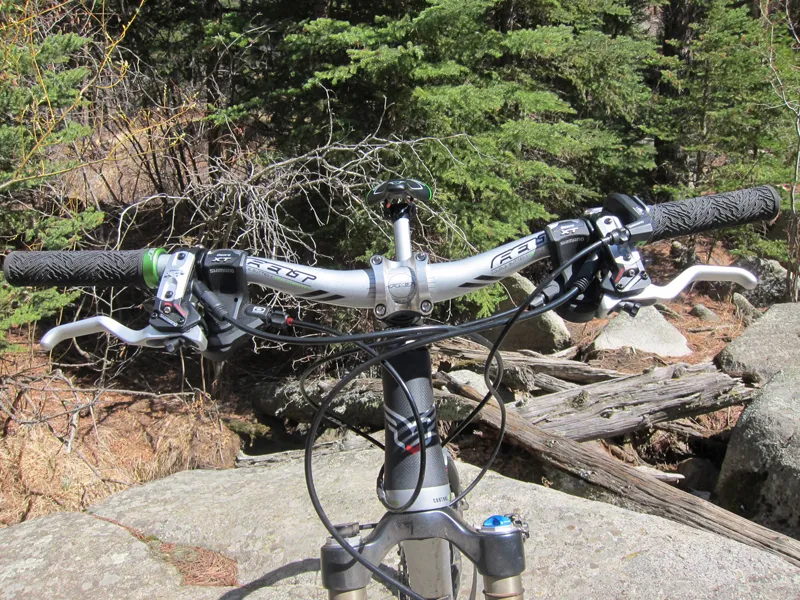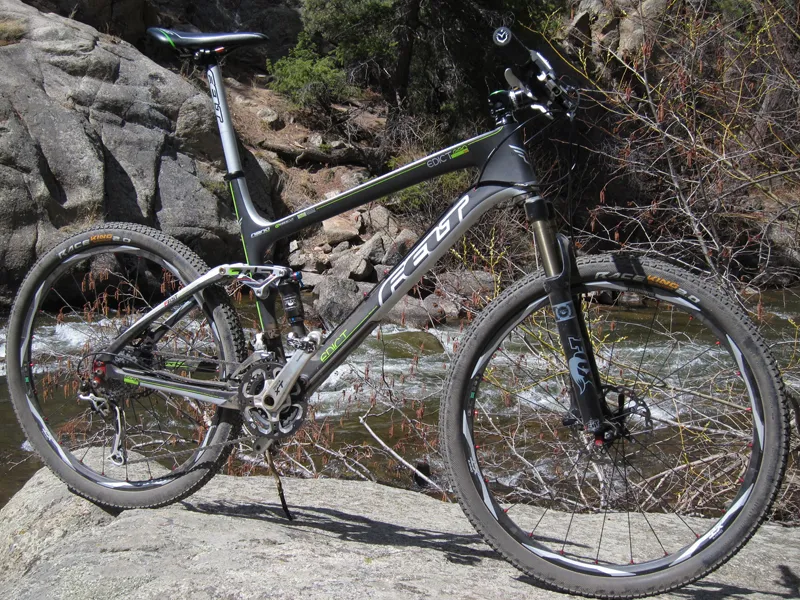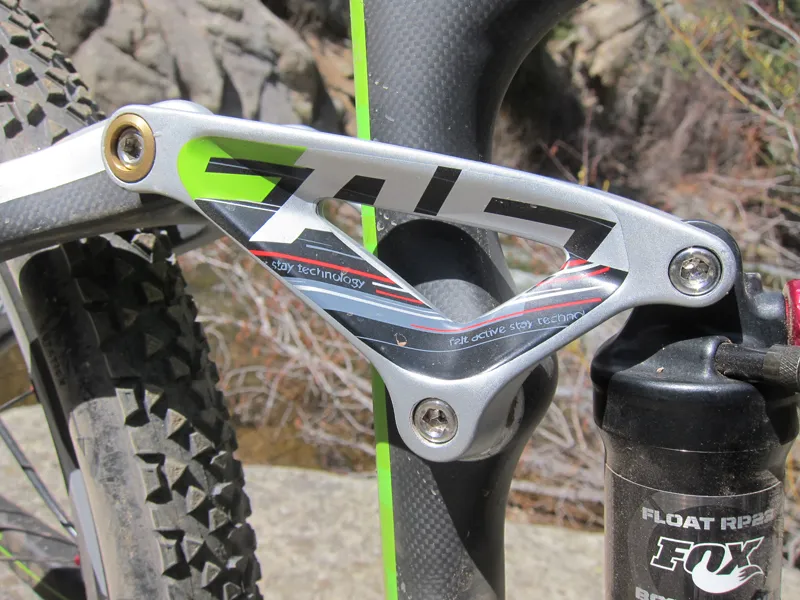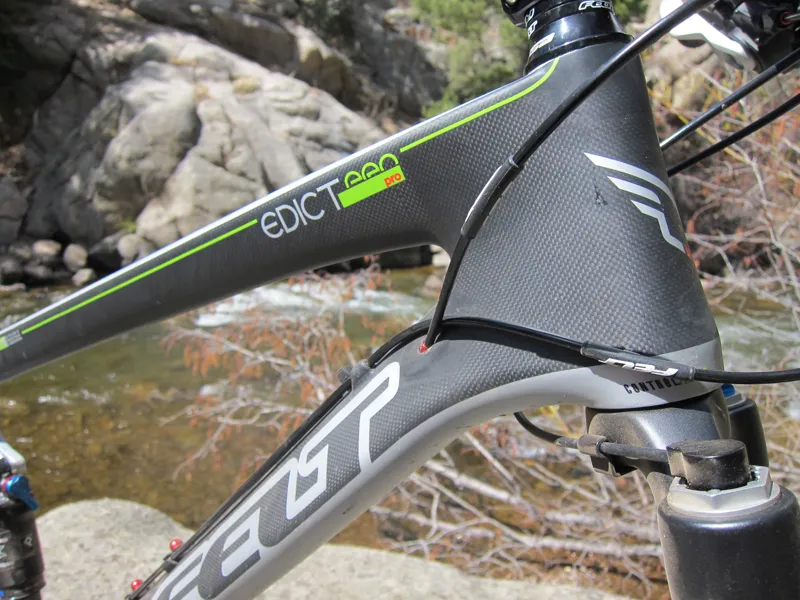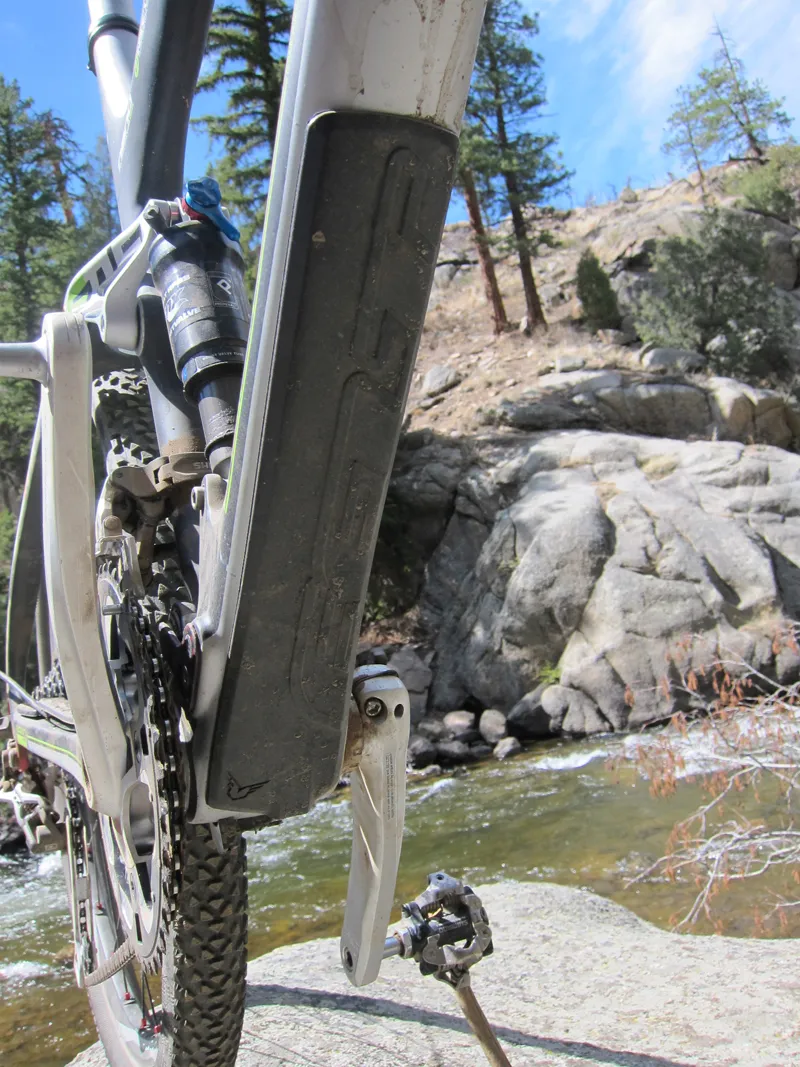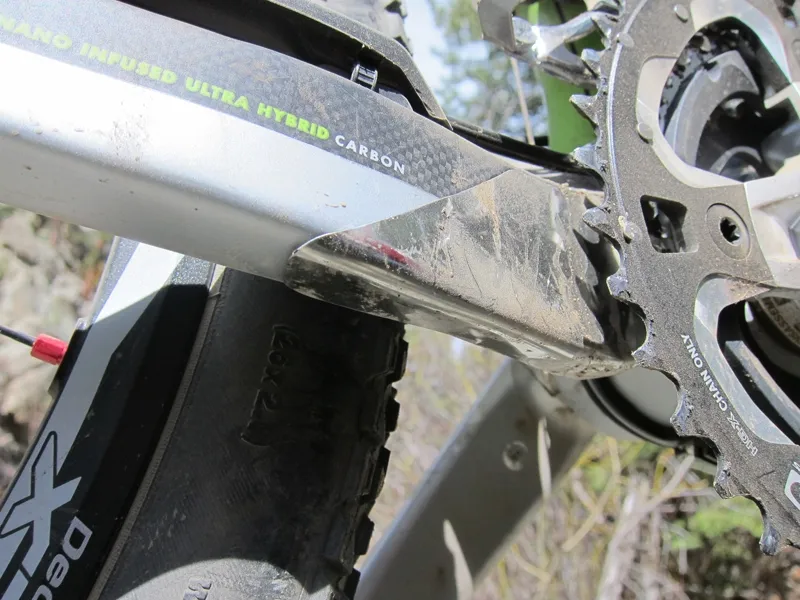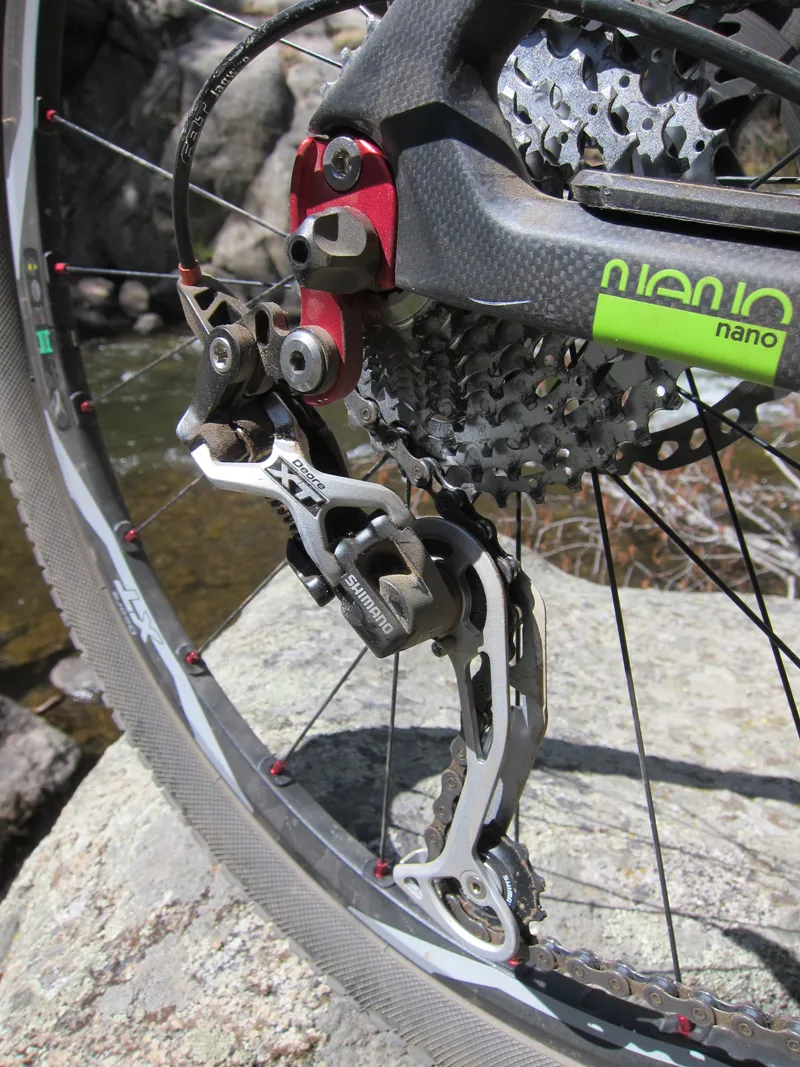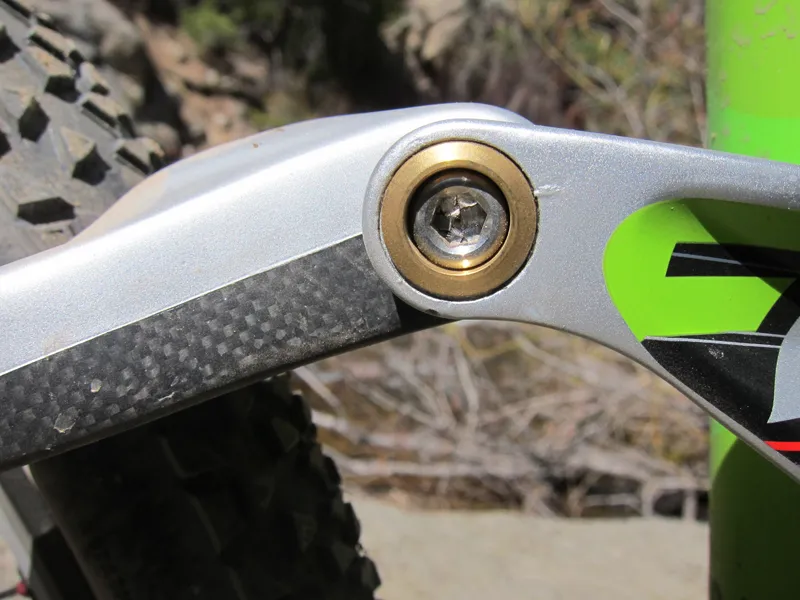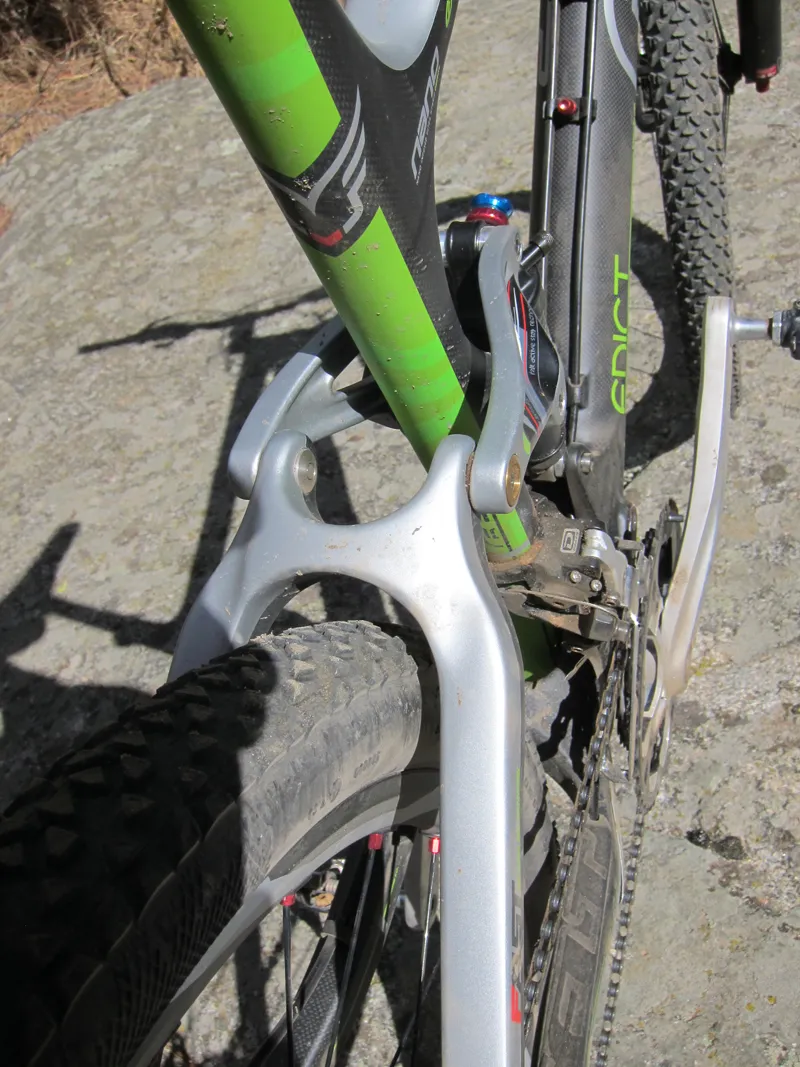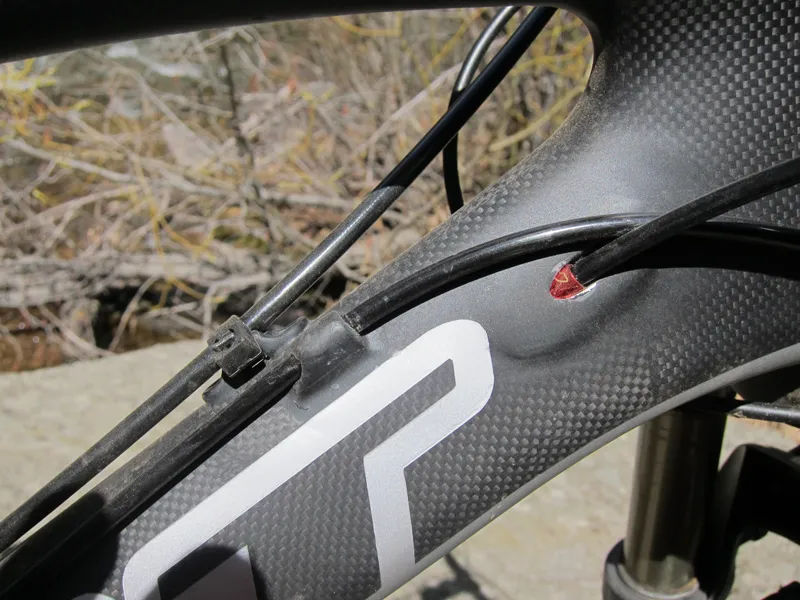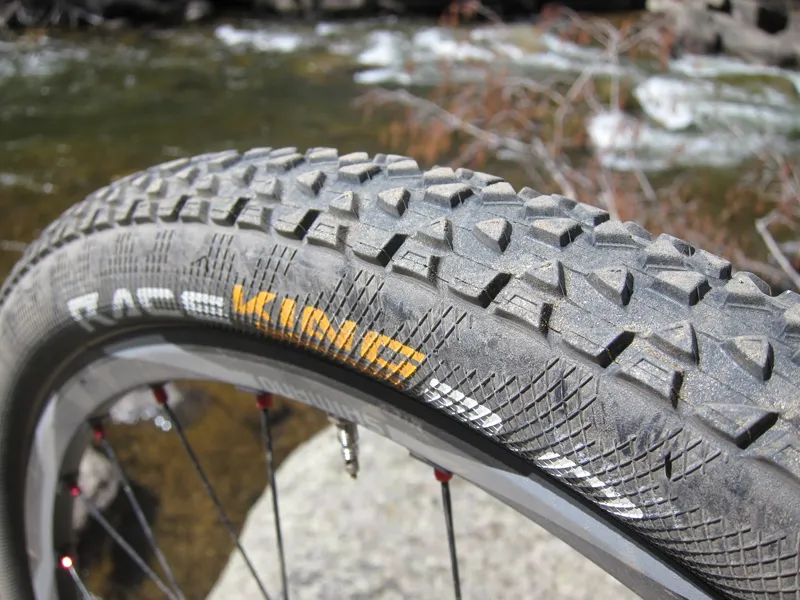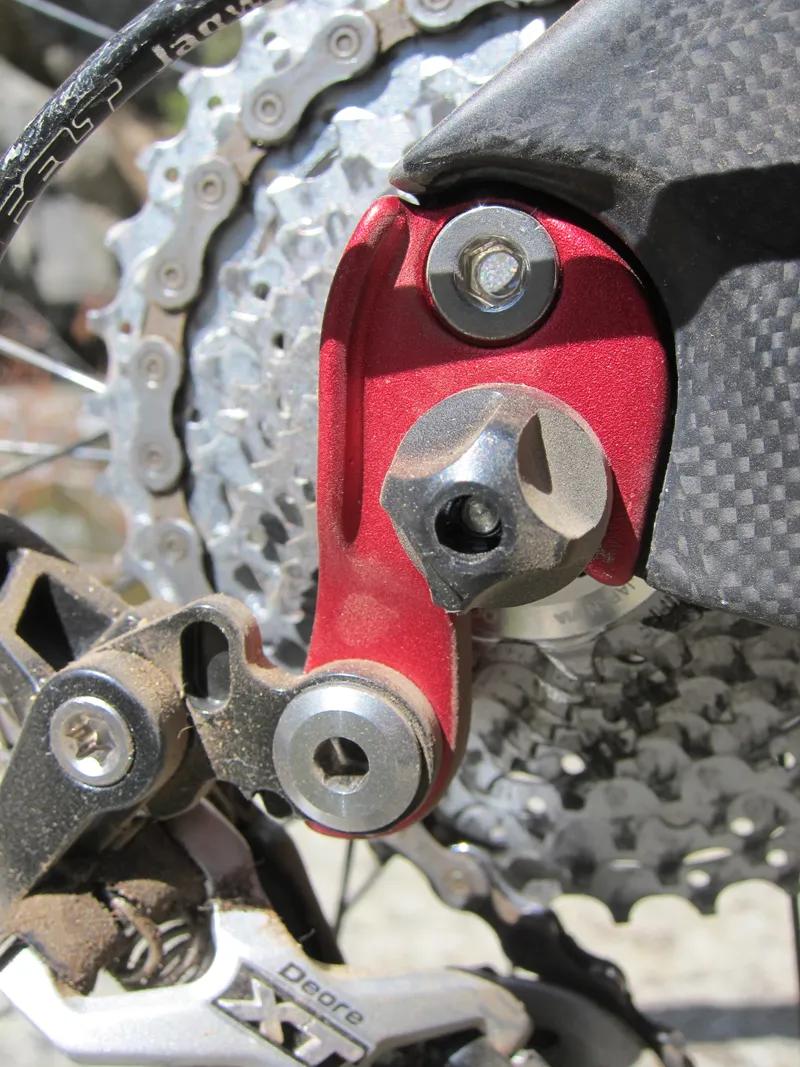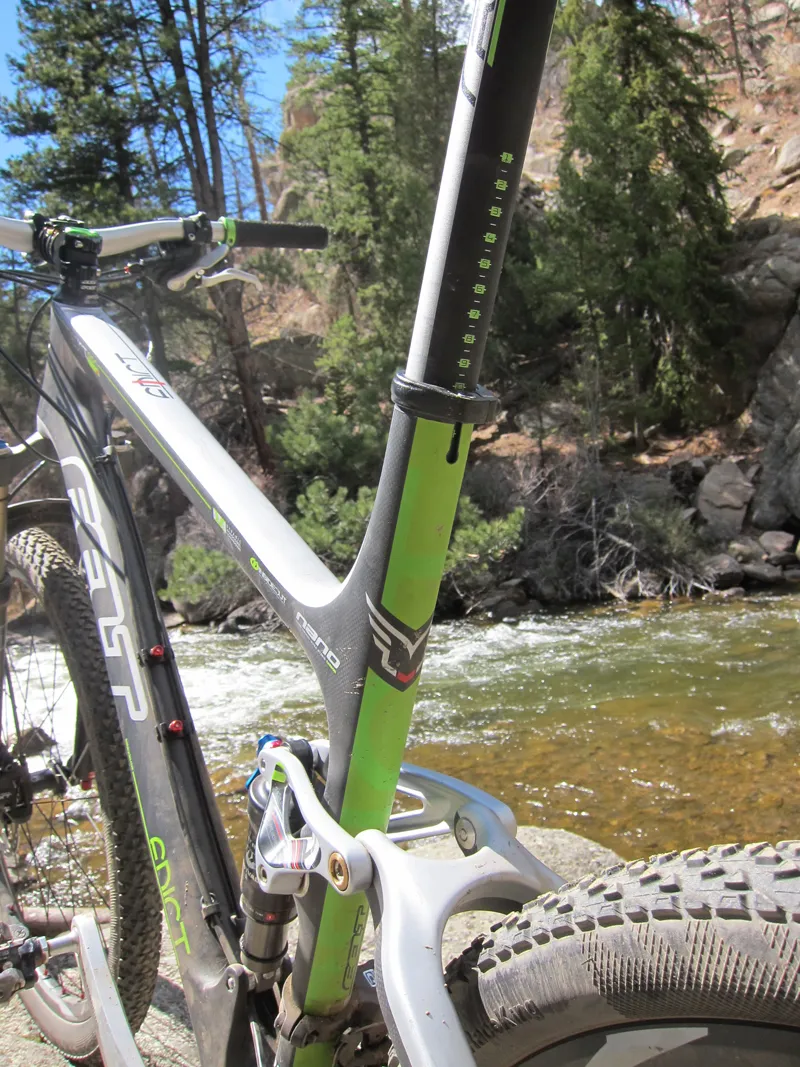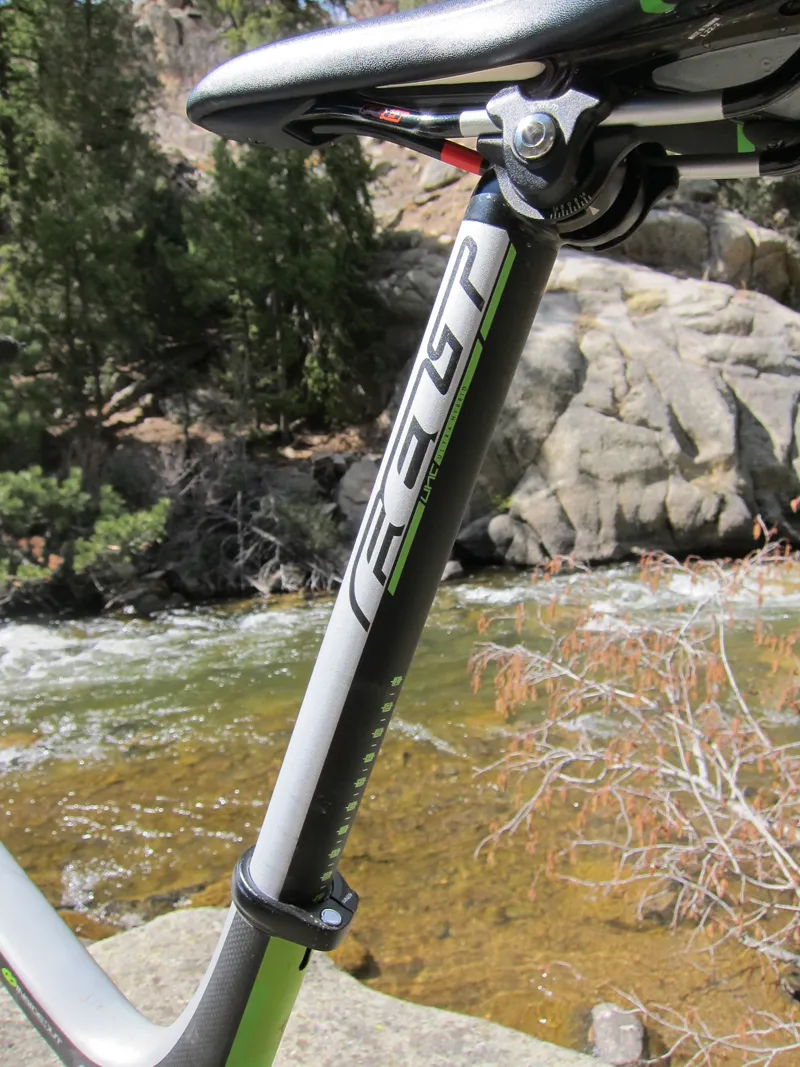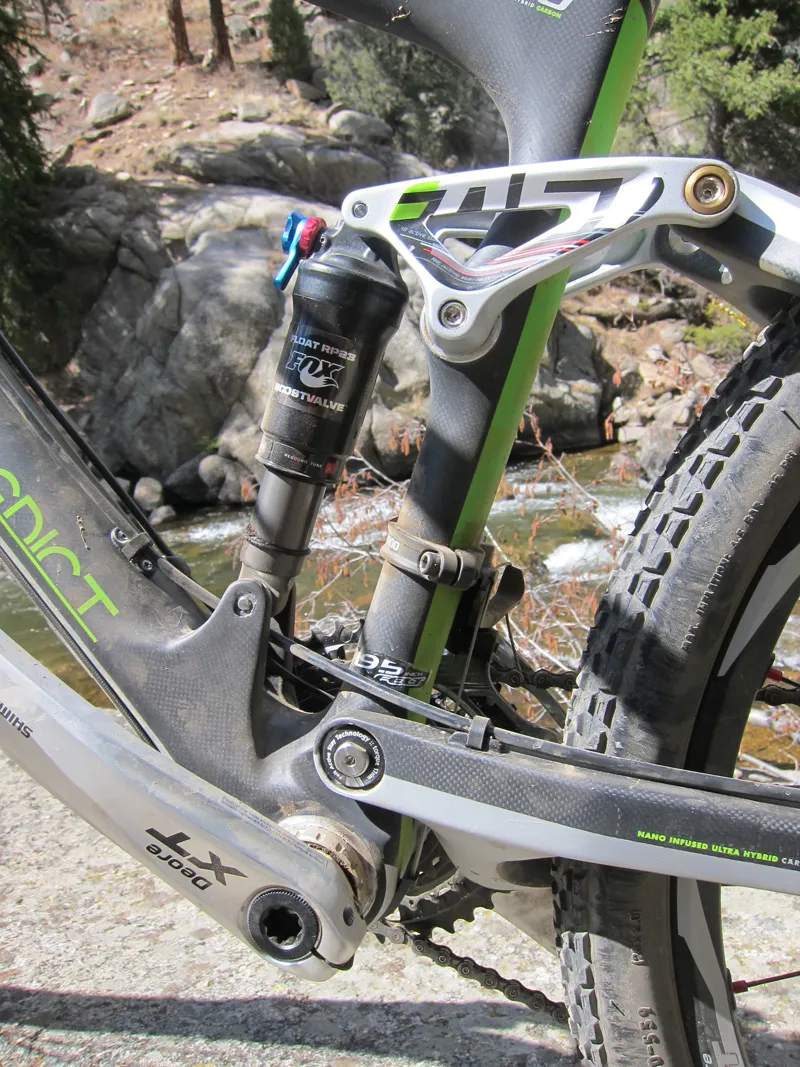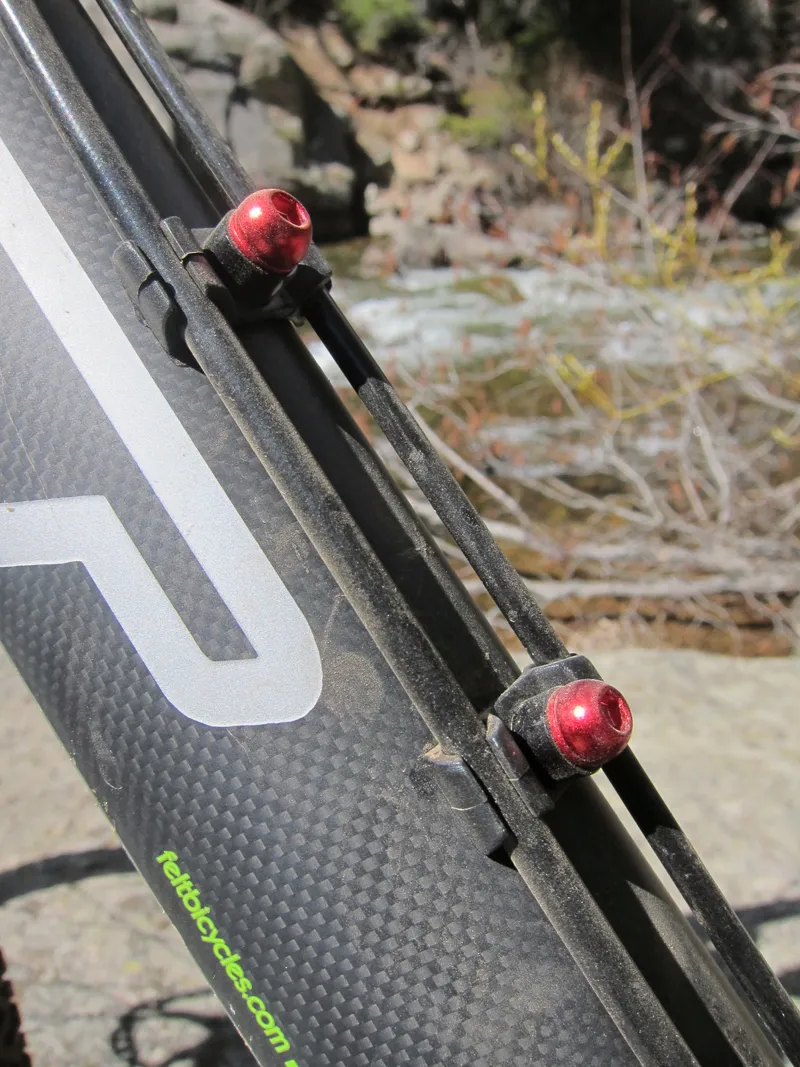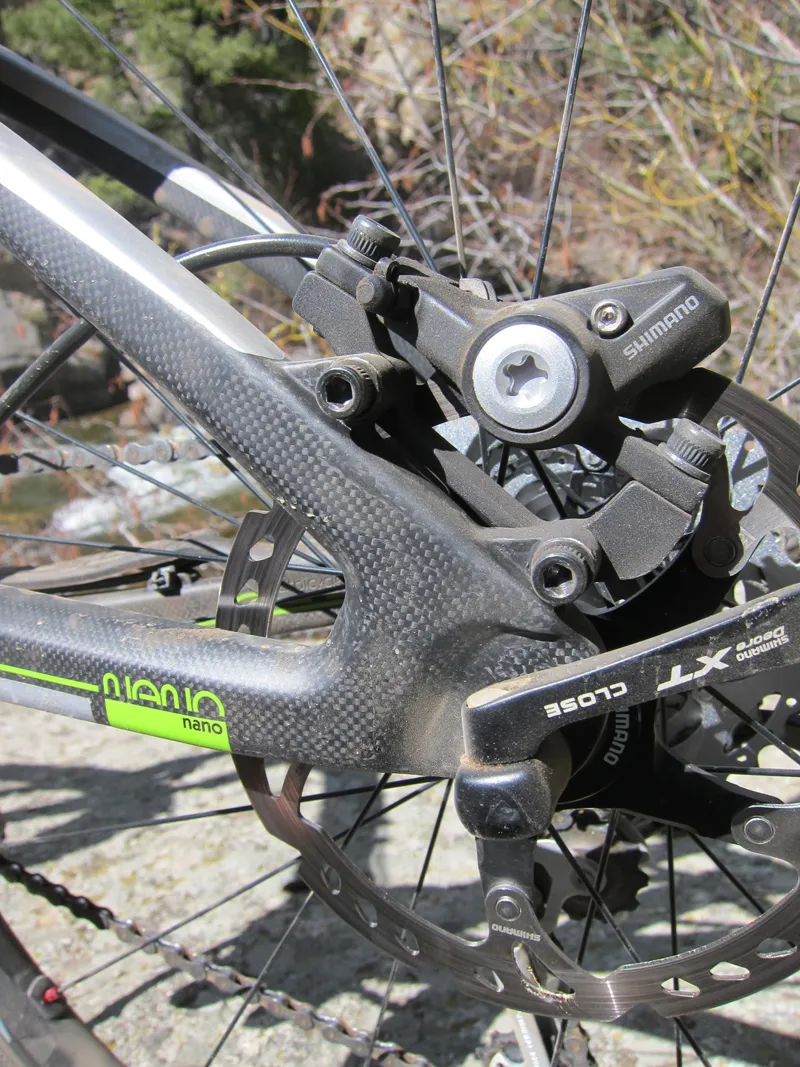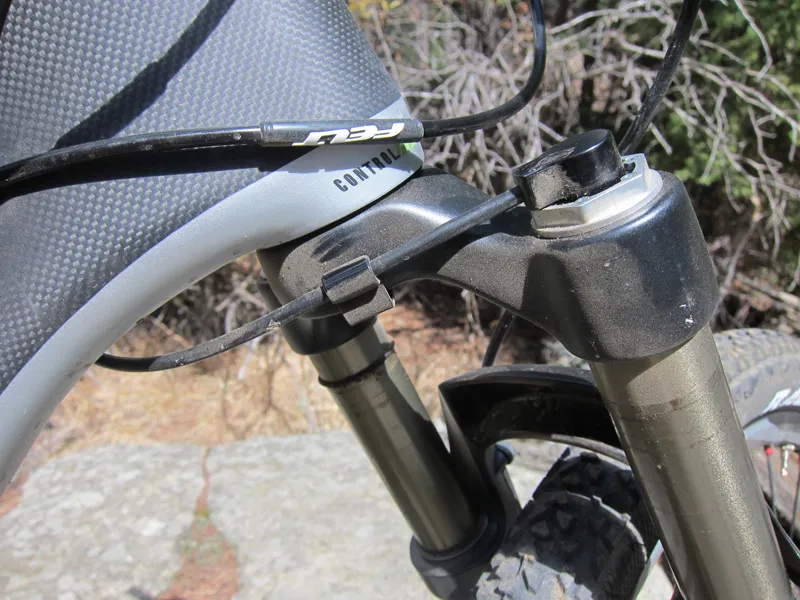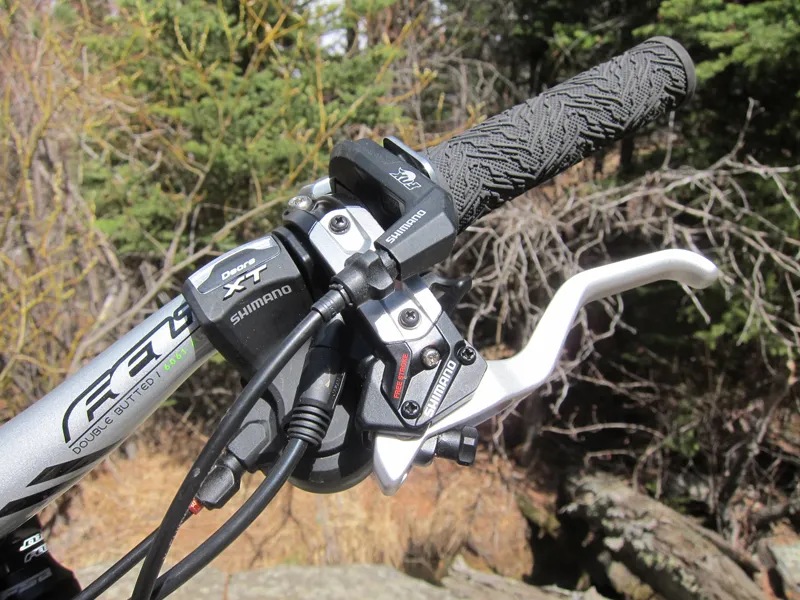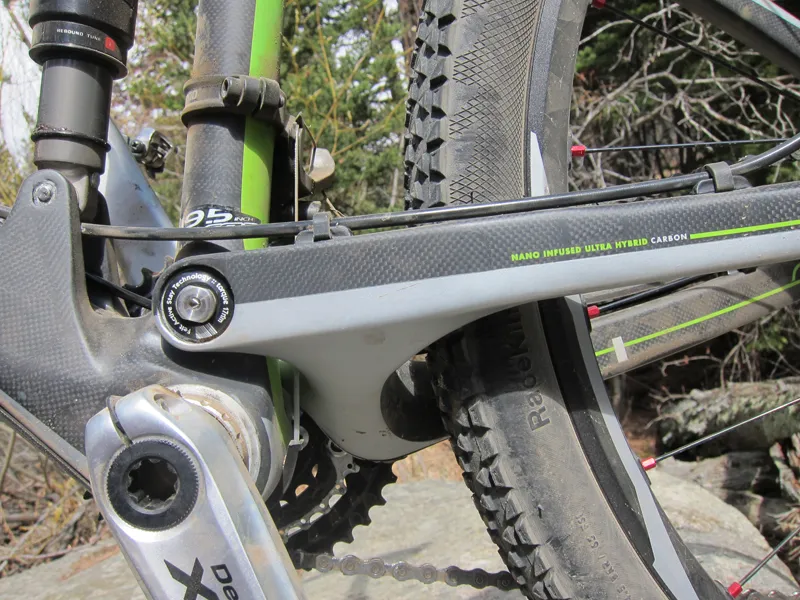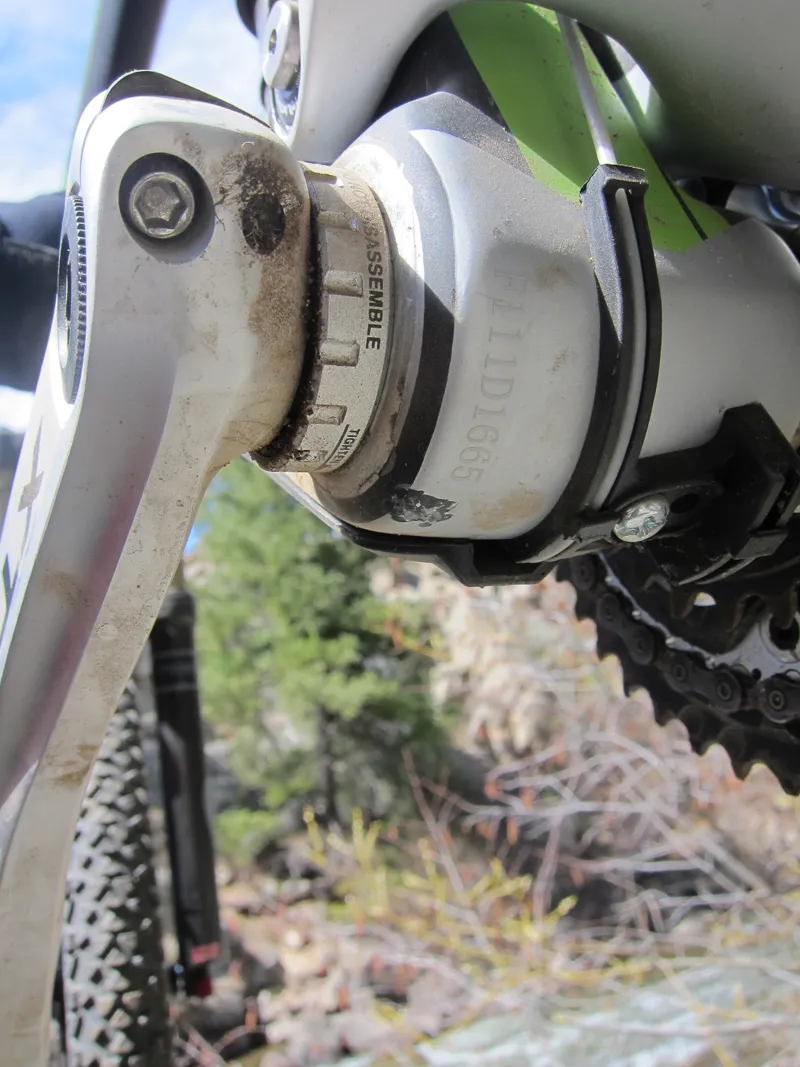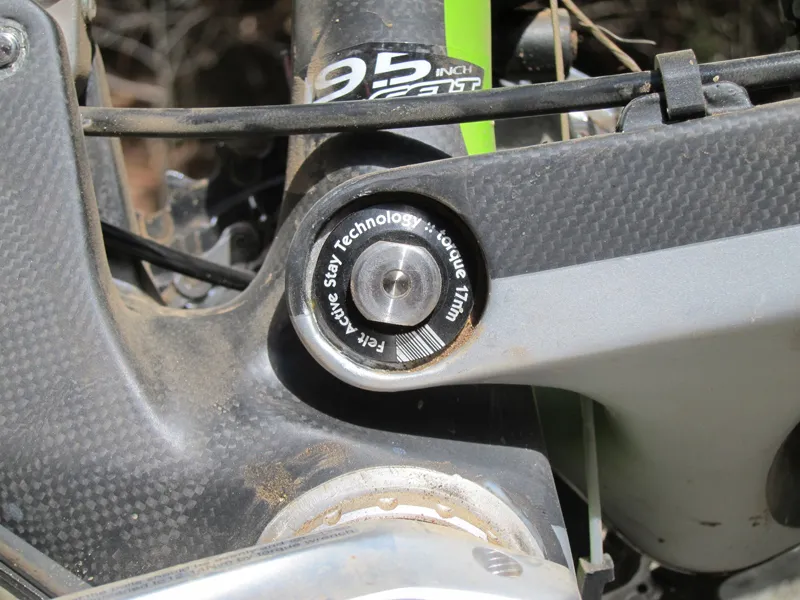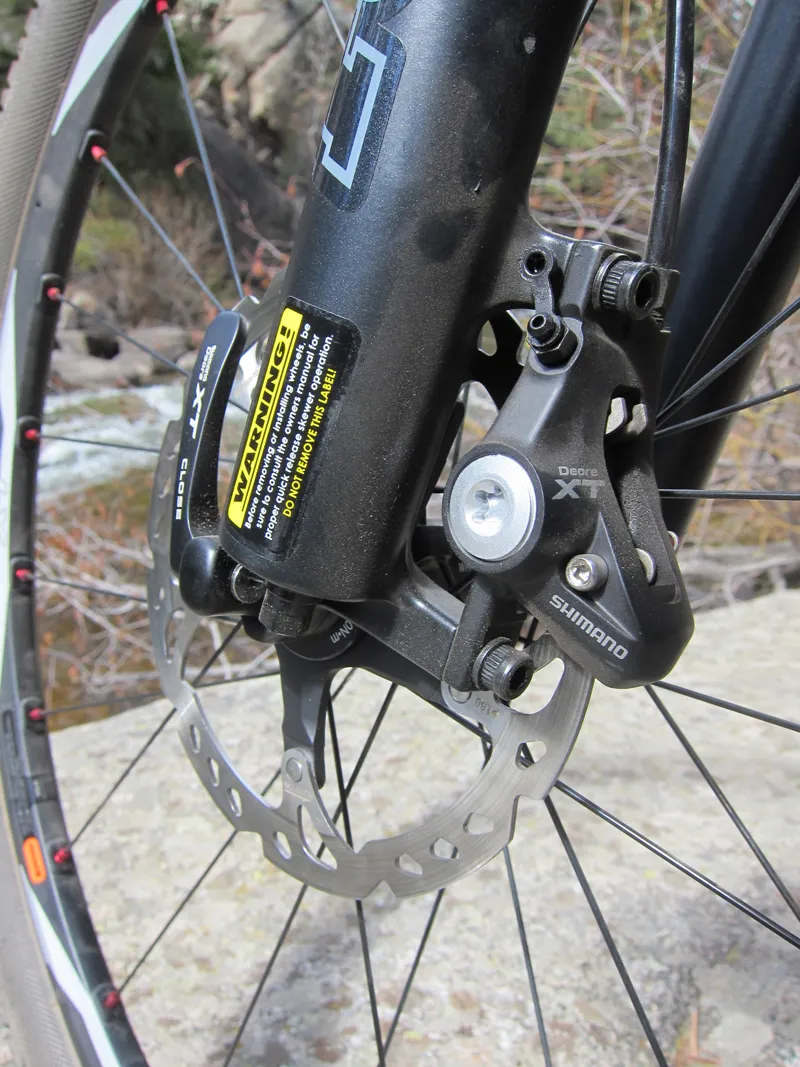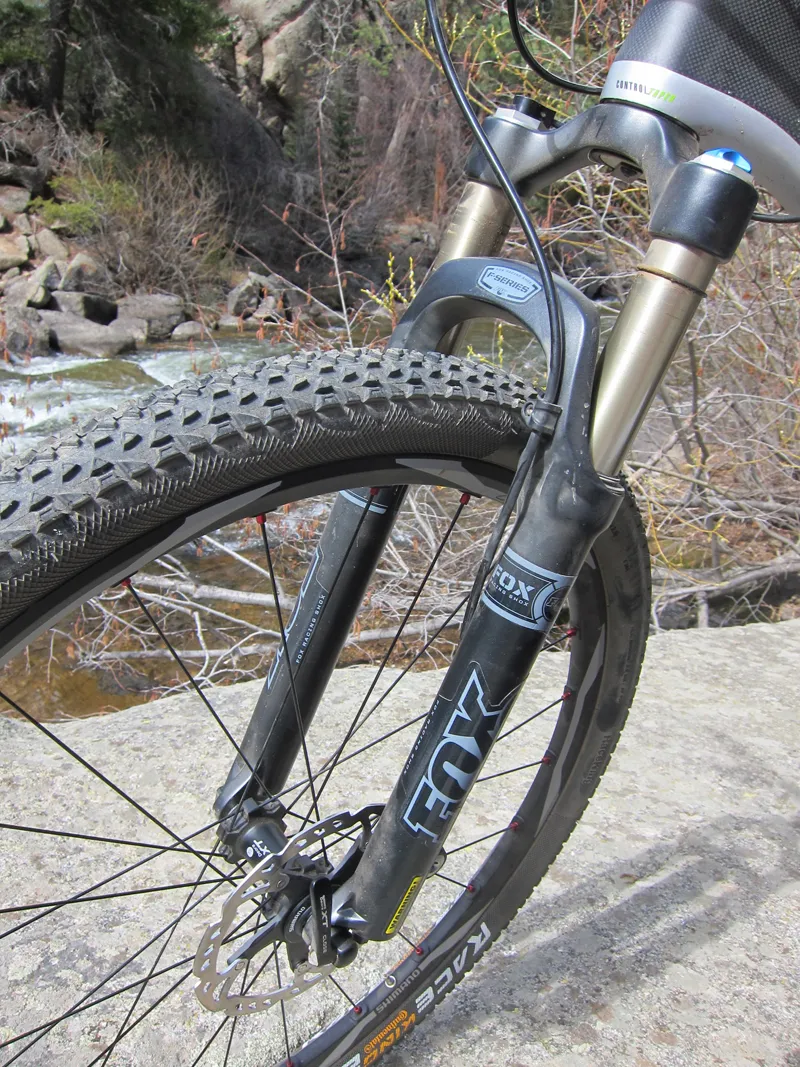Felt have finally filled the long-standing void between their carbon fiber hardtails and 120mm-travel Virtue platforms with the 100mm-travel, race-ready Edict. A new suspension design helps keep it suitably efficient and appropriately light but the quick handling and go-fast tires limit its appeal off the racecourse.
Ride & handling: A pinner on climbs and on tight trails, but somewhat nervous at higher speeds
Let there be no mistake, the Edict is a dedicated race bike and it makes no apologies for it. Its geometry, equipment spec, spring rate and suspension travel all lend themselves very well to short-track and cross-country courses where explosive acceleration, efficient suspension and quick handling are key.
Big cross-sections and a tapered head tube yield good frame stiffness up front, while the all-carbon stays with pivot-free dropouts do the same out back. The chainstays are fairly short for a full-suspension, 26in-wheeled bike at 425mm, and with a relatively steep (when compared to the growing trend of more relaxed angles, even on race bikes) 71-degree head angle, the Edict is quick to change direction.
The net result is that climbing up tight, steep switchbacks is almost laughably easy, and the short wheelbase can also come in handy when descending tight switchbacks that aren’t too steep or fast. In addition, the low 31.5mm-high bottom bracket works well at keeping a low center of gravity on smoother trails.
Felt's FAST (Felt Active Suspension Technology ) rear suspension design is purpose-built for cross-country endeavors. The first 50mm of travel is so progressive that the Edict feels more like a 60-75mm travel bike on smoother trails. The ProPedal platform damping on the Fox RP23 rear shock isn't necessary when seated, as long as you can produce a reasonably smooth cadence, and the system is efficient enough that climbing out of the saddle typically doesn't call for it, either – at least for short bursts.
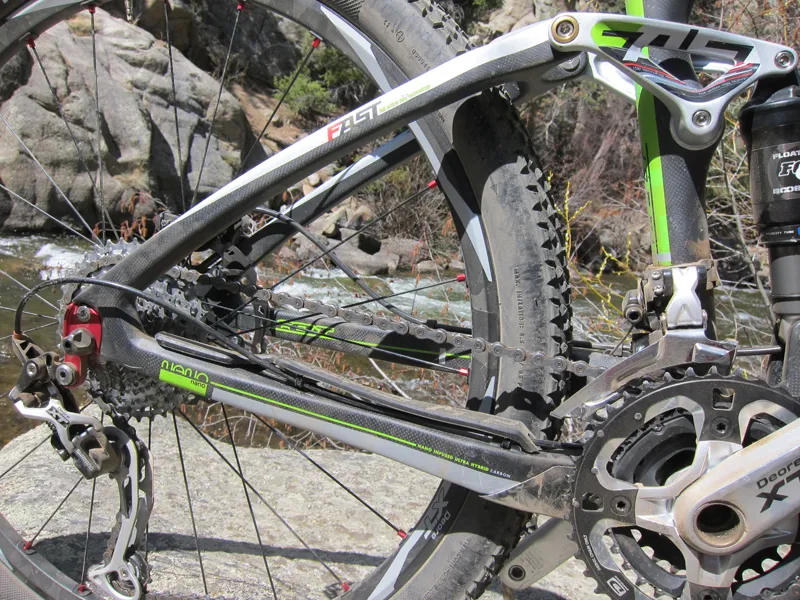
As soon as the trail gets rougher, though, the Edict’s suspension quickly changes its feel from progressive to very linear and compliant. Medium and larger hits blow past the secondary spring rate found in the carbon rear triangle and unlock the full 100mm of travel, giving a surprisingly stable feel to the back end. Pedaling in the middle or small ring doesn’t seem to affect suspension efficiency on either smooth or rough trails, but big ring mashers will notice a harsher ride over bumps of all sizes.
Venture outside the Edict's finely tuned but narrow focus, however, and it quickly complains about being outside its comfort zone. The geometry that provides such nimble low-speed handling manners makes high speed descents somewhat twitchy, and it doesn’t do much to help keep rider weight behind the front axle on steep, technical descents, either – and keep in mind that modern racecourses often include both. Likewise, the low bottom bracket that's so good for cornering stability puts crankarms, pedals and even the bottom bracket shell itself in harm's way of rocks and roots, especially while running Felt’s recommended 25-30 percent sag.
We also found the effects of the tapered head tube to be somewhat mixed. On the one hand, the bigger lower steerer diameter and larger crown add stiffness right where it's needed and there's also the side benefit of a larger and stiffer down tube. However, Felt throw some of this added rigidity away by choosing a fork with open dropouts, not to mention the associated wimpy 9mm quick-release skewer.
Smaller riders may not feel the same way, but larger, more aggressive riders used to the benefits of through-axles will certainly notice less steering precision. Felt say the decision was made in the interest of shaving grams. According to marketing director Doug Martin: “The Edict’s front axle selection was all about building as lightweight, user-friendly a race bike as possible”.
Speaking of larger riders, the Edict’s seatmast gets a little flexible when the seatpost height is tailored to longer legs, too. This probably isn’t something that smaller riders will notice, and doesn’t seem to affect performance, but it's a noticeable trait of the Edict for riders who tend to have more post exposed than hidden in the frame.
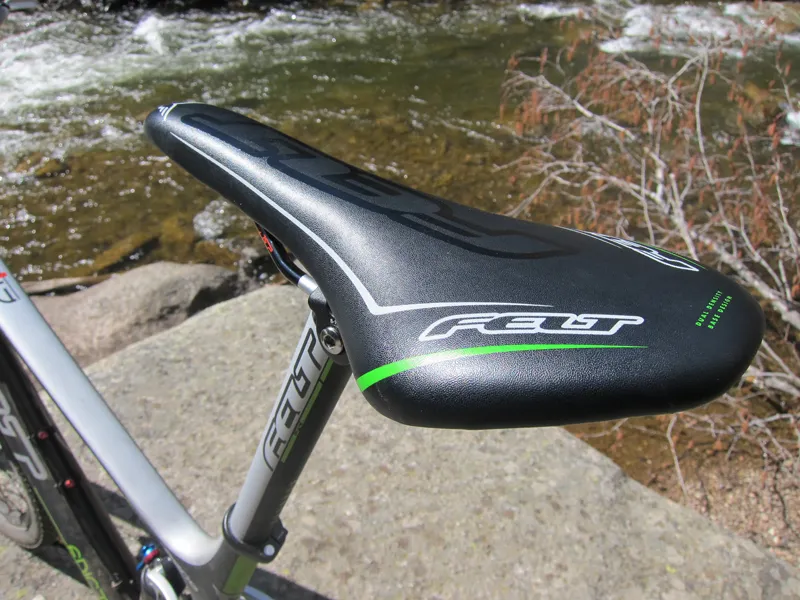
Frame: Carbon construction and a race-tuned rear end
Felt build the Edict Pro frame with the same 'UHC Ultimate+Nano" carbon fiber blend as the top-end LTD model and similar internal polyurethane mold technology as used on their flagship road models to minimize wasted material and to create smoother tube surfaces both inside and out. The front triangle is all carbon save for a few aluminum hard points and the aluminum threaded bottom bracket sleeve, while the rear triangle is carbon fiber right down to the dropouts. Upper links are forged aluminum and according to Felt, all of the titanium and aluminum hardware weighs just 120g.
Actual weight for our large-sized test frame is just 2,213g (4.88lb), including the Fox RP23 rear shock, seat collar and glued-on down tube protector – pretty close to company claims. Much of that weight saving is attributable to the FAST suspension design, which omits traditional dropout pivots in favour of tuned flex zones in the seat- and chainstays – while gaining stiffness in the process, too.
The pseudo-pivotless rear end largely explains the Edict's curious split-personality suspension performance on the trail. Felt have essentially built a secondary spring rate into the frame to complement the rear shock and help the rear triangle spring back into the recommended 25-30 percent sag range. When the rear shock is removed, the rear triangle naturally wants to rest at that point and there's noticeable resistance when either compressing or extending the swingarm in either direction.
"[FAST] lends some amount of aid to the shock absorber to counteract suspension bob from rider input," explained Felt engineer Nick Ducharme. Under less demanding situations – like seated pedaling – the built-in spring rate seems to do its job of keeping the rear end from moving but just as we noticed on rougher ground, more forceful impacts easily overcome the carbon stays' springiness, letting the Edict feel more like the 100mm-travel bike that it is.
Felt use a mix of internal and external routing for the Edict Pro frame and in our opinion, it's a muddled and confusing combination. The rear brake uses zip-tie mounts as usual and the rear derailleur uses full-length housing that runs through a combination of molded-in carbon guides and plastic clips. The front derailleur, though, runs inside the down tube in an effort to protect it from grime. While functional, it's definitely not the cleanest-looking setup around.
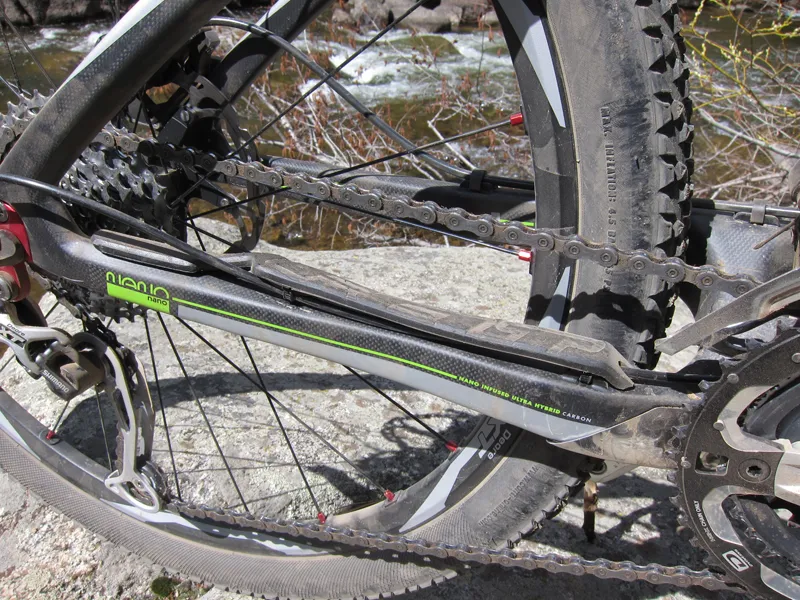
Equipment: Mostly solid, race-ready stuff but a few nits to pick
The Edict Pro's mixed bag of parts provides a solid foundation of primary components while still leaving several great opportunities to upgrade. The Shimano Deore XT 10-speed drivetrain worked flawlessly, as did the XT brakes. The matching XT wheels are easy to set up tubeless and held up well over weeks of testing, but are a bit heavy for a cross-country race bike. Even so, total weight for our sample (without pedals) is a reasonable 11.2kg (24.7lb).
We like the Fox 32 F100 FIT fork's handlebar-mounted lockout and ever-competent FIT damper, but the open dropouts felt outgunned and flexy compared to the Edict’s rear end, especially for larger riders. In our opinion, replacing it with a 120mm fork with a 15mm through-axle would be a better match, even for racing applications (notably, Scott have done something similar with more recent iterations of their Spark 100mm-travel range).
As for the rest of the spec, a couple of bits seem like clear concessions to what cross-country racers supposedly need, but there are real-world sacrifices made in doing so. For one, the 650mm handlebar seems a bit narrow for a large-sized bike and even though the Edict Pro isn't Felt's top-end model, it's still US$5,499 so it'd be nice to see a carbon bar instead of the painted aluminum one included here – likewise for the aluminum seatpost.
Similarly, the Continental Race King tires are definitely meant for smooth courses with their low-profile tread and disappointingly low-volume casing. They did gain more traction than expected in looser terrain, but still got pulled off and replaced with something meatier after a couple of rides. Overall, Felt seem to have done their homework on a great cross-country suspension design, but the spec and geometry narrow the Edict’s value to a rather small market. We’ll be curious to see if the spec and geometry get tweaked in future.
